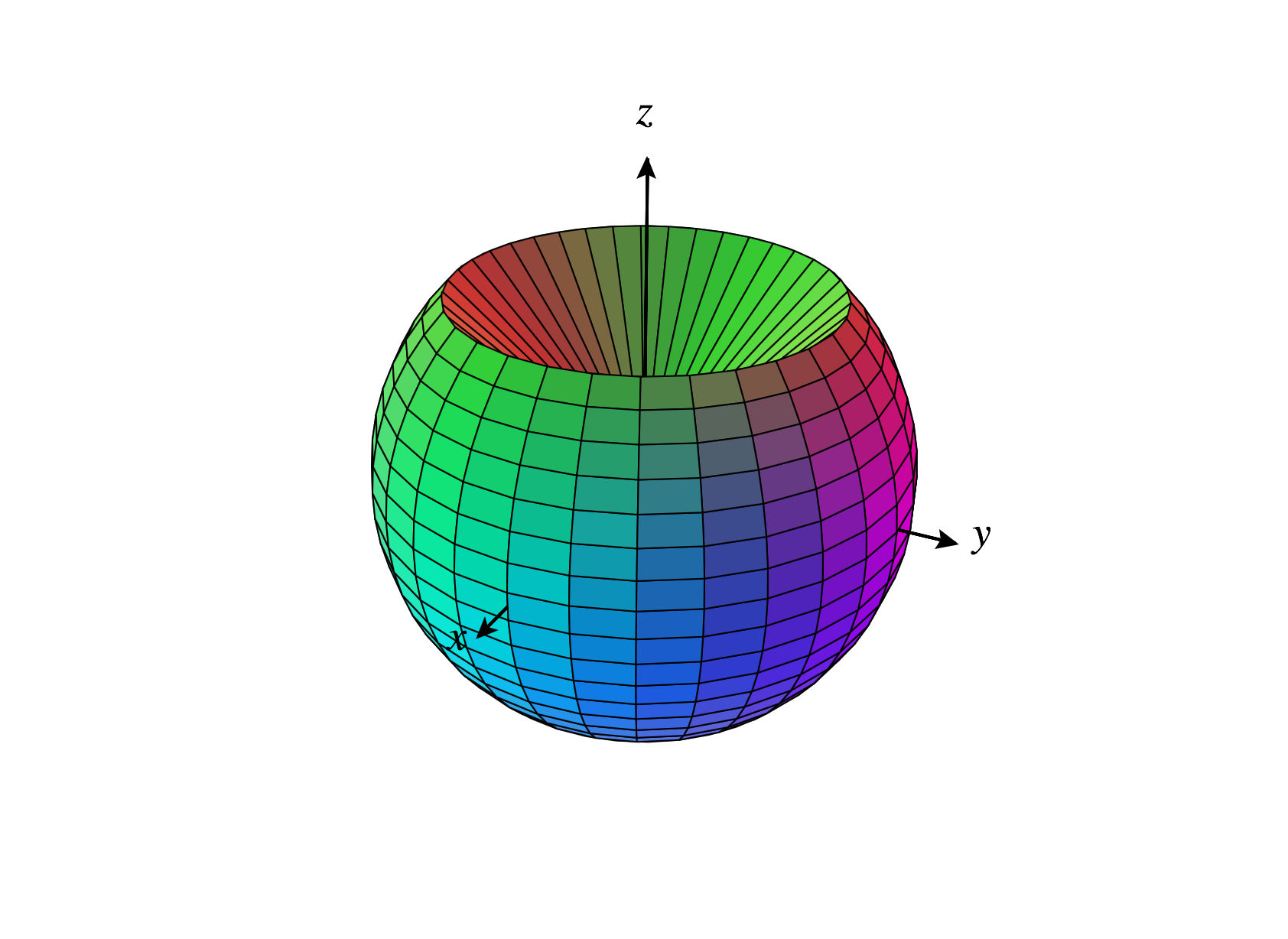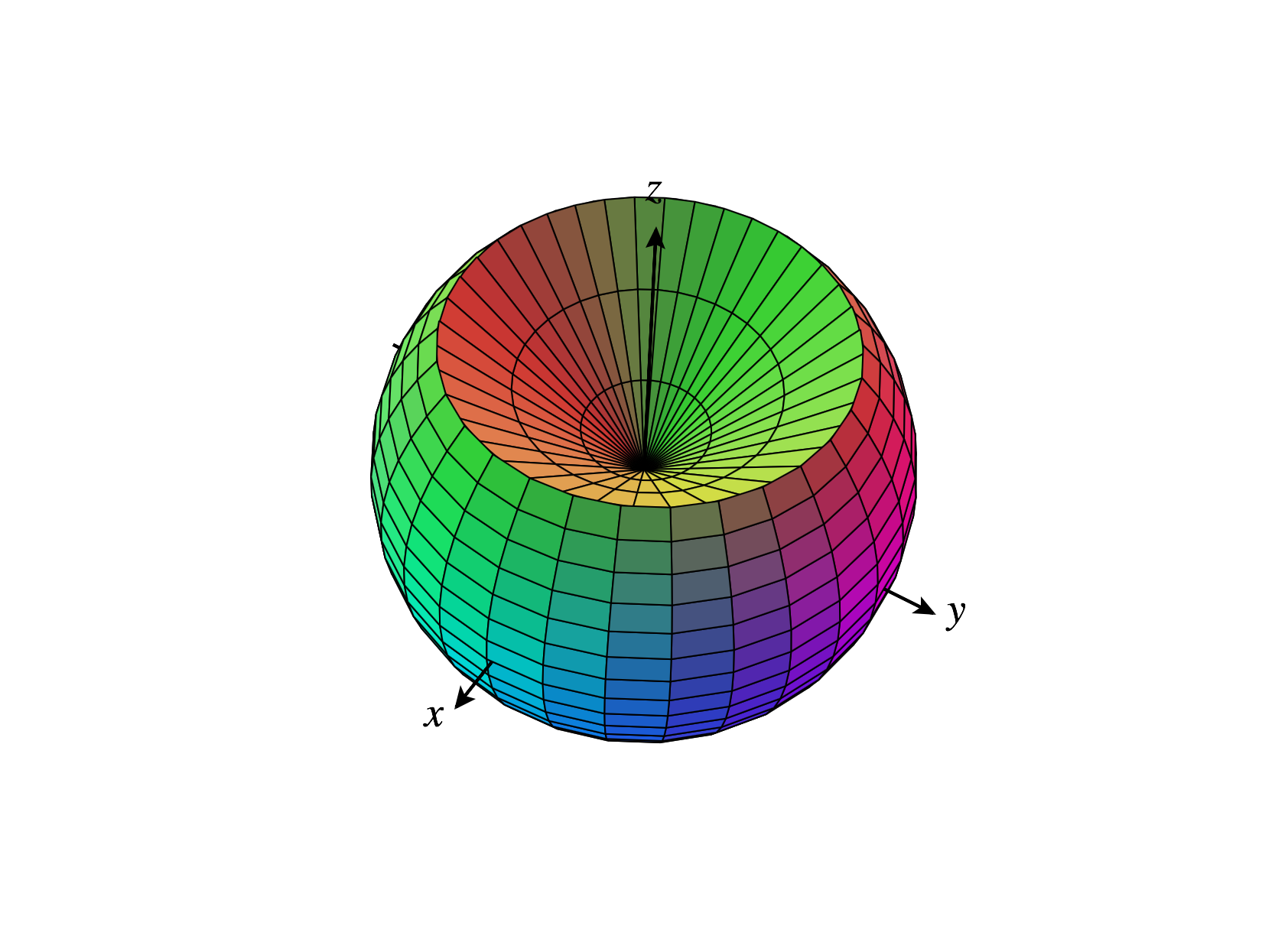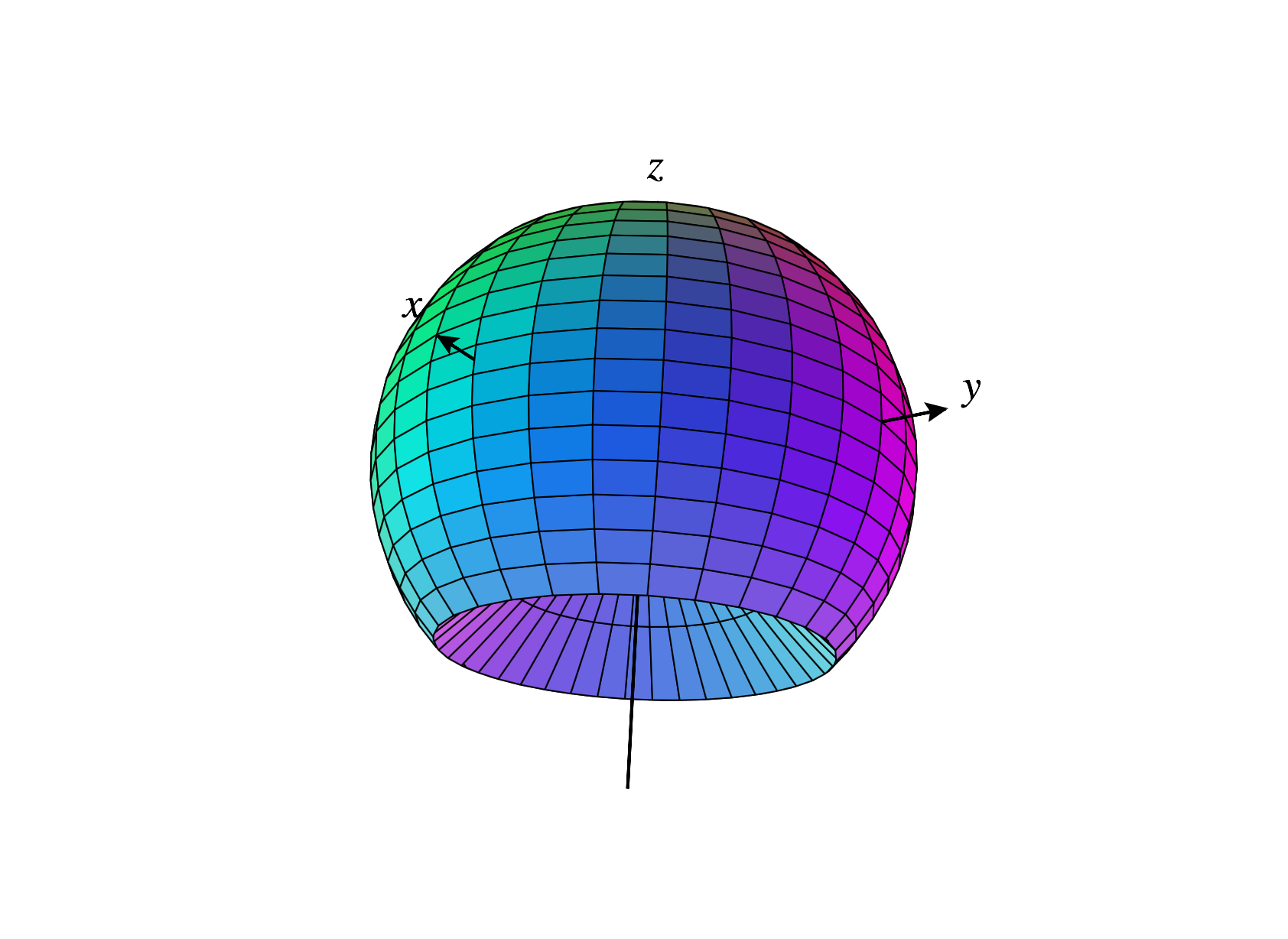- (a)
- Sketch the intersection of this surface with the -plane.
- (b)
- Given that does not appear in the equation, what can you say about the surface?
- (c)
- Sketch the surface.
Graded Problems
Consider the surface in described by the equation in cylindrical coordinates.
- (a)
- Suppose we have a curve in defined by the polar equation , for some function . What is the relationship between this curve and the curve defined by in polar coordinates?
- (b)
- Suppose we have a surface in defined by the cylindrical equation , for some function . What is the relationship between this surface and the surface defined by in cylindrical coordinates?
- (c)
- Suppose we have a surface in defined by the spherical equation , for some function . What is the relationship between this surface and the surface defined by in spherical coordinates?
- (d)
- Again, suppose we have a surface in defined by the spherical equation , for some function . What is the relationship between this surface and the surface defined by in spherical coordinates? Hint: it’s not a rotation.
Professional Problem
Consider the solid below, which is obtained by taking the portion of a solid sphere of
radius which is outside of the (double) cone .






- (a)
- Is this region easier to describe in spherical coordinates or in cylindrical coordinates? Justify your answer.
- (b)
- Describe this region in either spherical coordinates or cylindrical coordinates (based on your answer to (a)).
Completion Packet
Consider the point , given in Cartesian coordinates. Find all possible ways to write
in cylindrical coordinates.
Consider the point , given in Cartesian coordinates. Find all possible ways to write
in spherical coordinates.